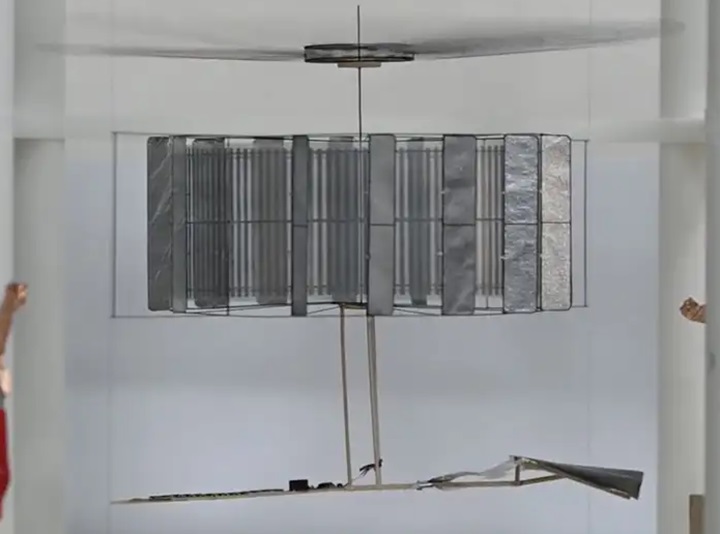Researchers at Beihang University in China are pioneering the development of a solar-powered drone with the potential for indefinite flight.
Led by Mingjing Qi, the team created a sophisticated circuit that significantly enhanced the voltage generated by solar panels, which was then integrated into a miniature drone prototype.
Drones have revolutionised various sectors due to their versatility, but their limited flight time remains a significant drawback. Active research is now focused on overcoming this limitation by developing tiny solar-powered drones capable of perpetual flight.
The latest prototype from Beihang University is a lightweight aerial robot weighing just 4 grams, equipped with solar panels that generate exceptionally high voltage power, theoretically enabling it to stay airborne indefinitely. This drone features a unique electrostatic motor, in conjunction with its compact solar panels, and is as small as a hummingbird. Although the current model has only managed to operate for an hour, the researchers believe their approach could lead to insect-sized drones capable of continuous flight.

The appeal of tiny drones lies in their wide range of applications, from communications and reconnaissance to search-and-rescue missions. However, their poor battery life has been a persistent challenge. While solar-powered models offer a promising solution, they often struggle to produce sufficient power for self-sustaining flight.
Scaling down these solar-powered drones also means reducing the size of their solar panels, which limits the available energy. Qi’s team tackled this issue by increasing the voltage of the solar panels to between 6,000 and 9,000 volts. They also opted for an innovative electrostatic motor, a departure from the conventional motors used in electric vehicles, quadcopters, and robots. This electrostatic propulsion system powered a 10-centimetre rotor on the drone.
Details on when this tiny solar-powered aerial robot prototype might transition to a production model remain unclear. However, the researchers’ work represents a significant technological milestone, suggesting a promising future for self-sustaining drones.
Support InfoStride News' Credible Journalism: Only credible journalism can guarantee a fair, accountable and transparent society, including democracy and government. It involves a lot of efforts and money. We need your support. Click here to Donate
